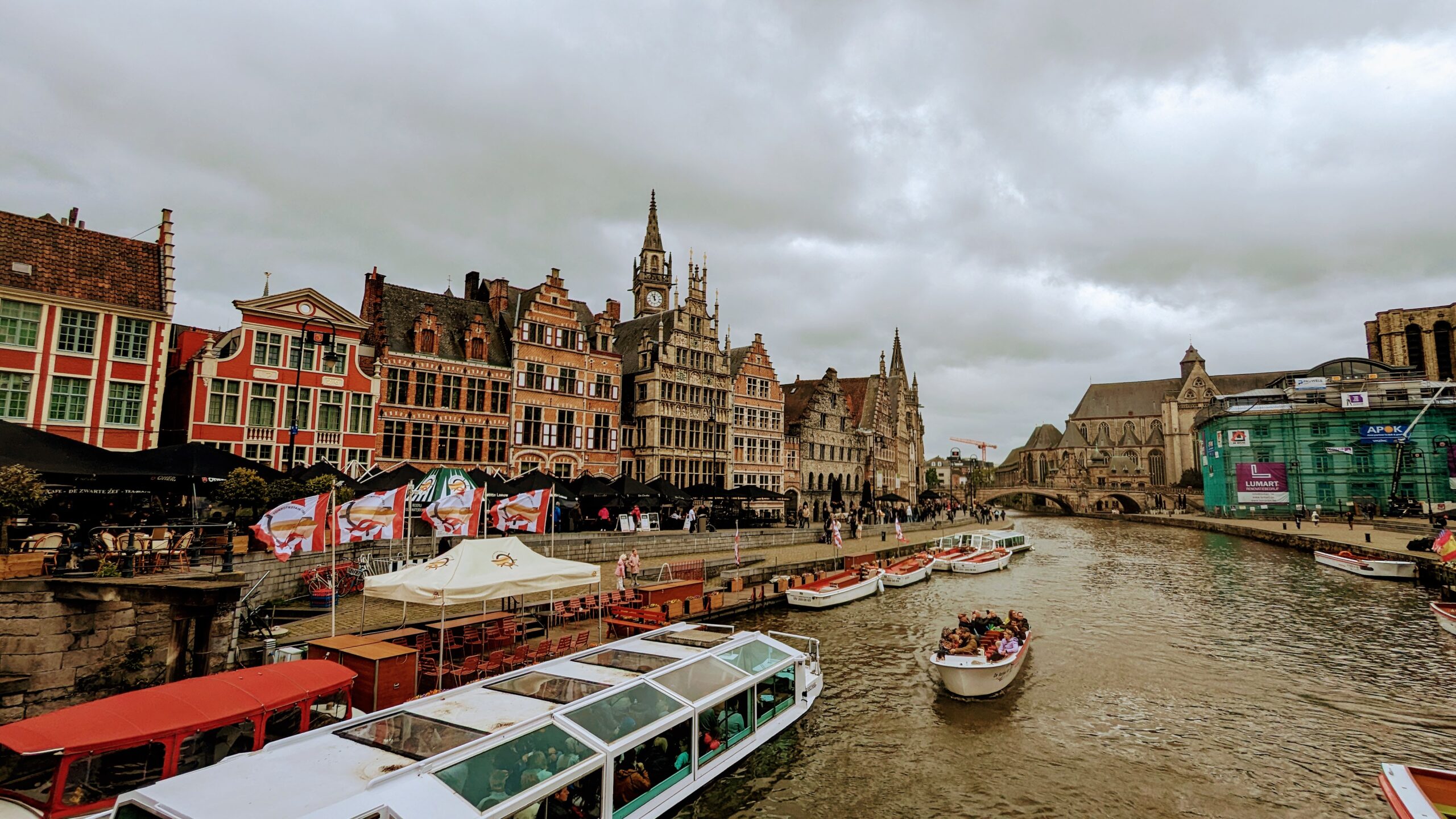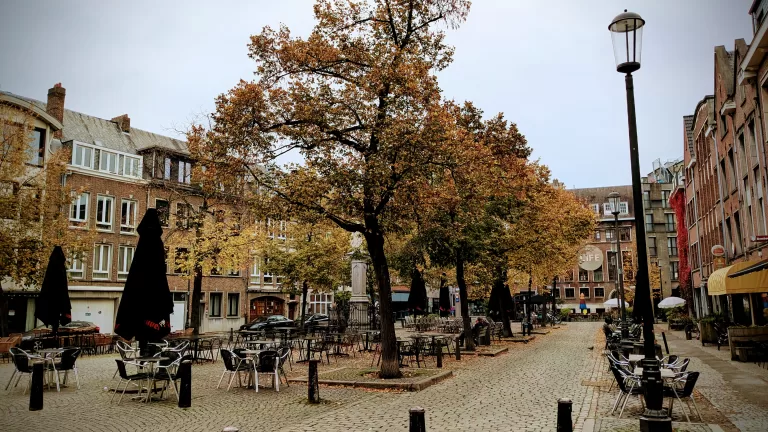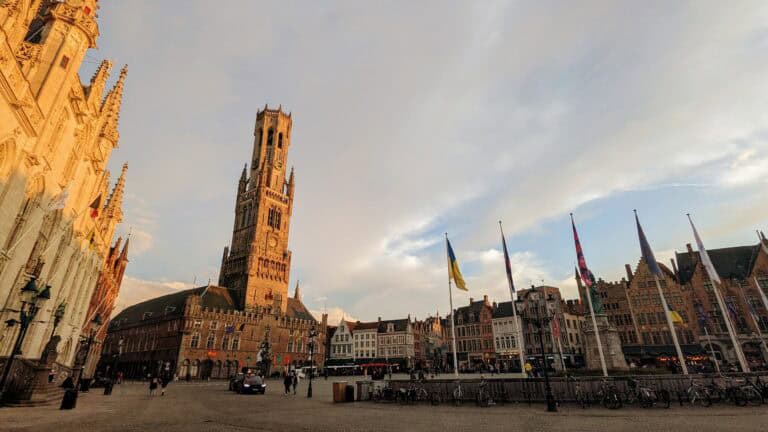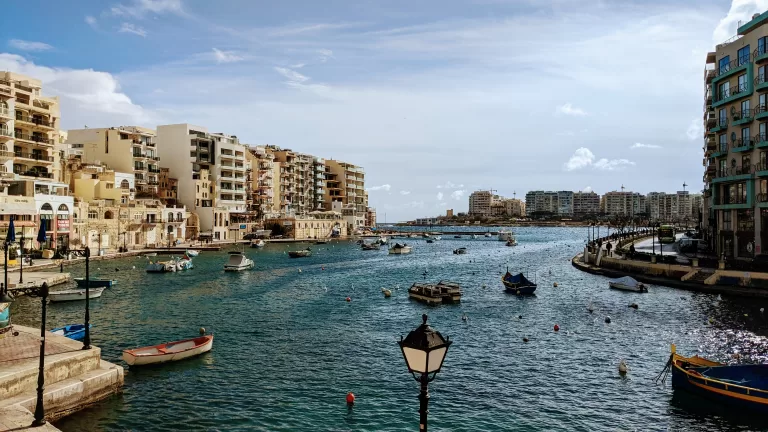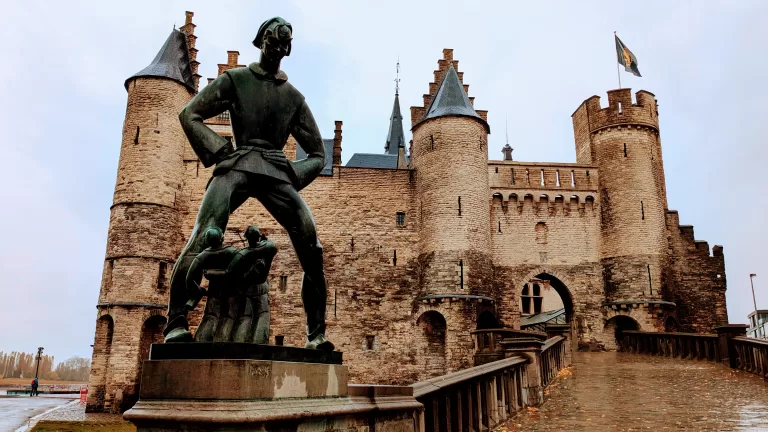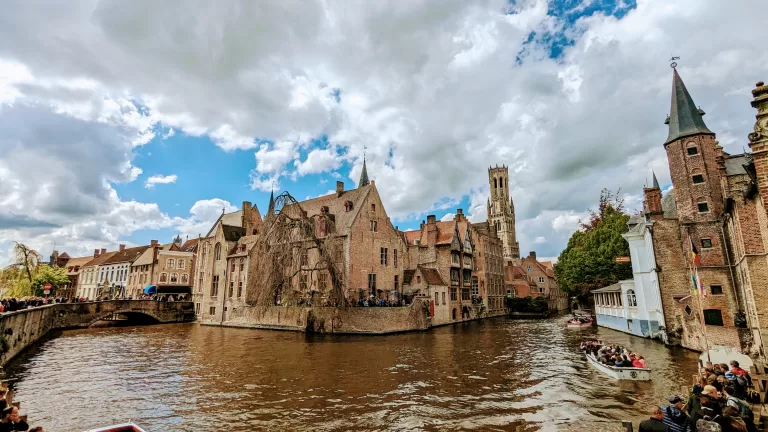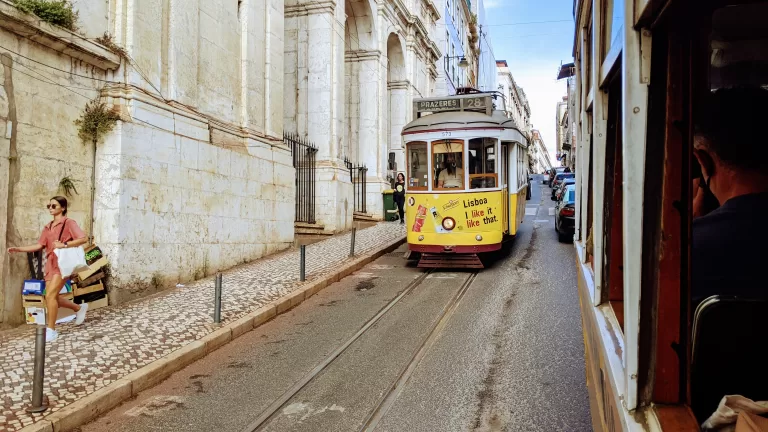26 best things to do in Ghent, Belgium (2025 travel guide)
You might be expecting another quaint Belgian city, which Ghent is – but it’s a lot more. It’s a place where you can admire centuries-old architecture in the morning, sip world-class Belgian beer in the afternoon, and dance the night away in trendy bars.
Many travellers overlook Ghent in favour of its more famous Belgian counterparts, missing out on this medieval marvel that combines rich history with a vibrant, contemporary vibe. There are so many things to do in Ghent, from top attractions, museums, and charming canals, to amazing local cuisine and hidden gems.
So, are you ready to uncover the secrets of Ghent? After reading this, you’ll be booking your tickets faster than you can say “Belgian chocolate”!
And, don’t forget our guide to visiting Ghent – when to go, how to get there and more.
The authors: we visited Ghent as part of our first holiday to Belgium. It’s stuck with us as a beautiful – and overlooked – place to go. If you’ve got any questions or suggestions of what we should add here then let us know!
Planning a multi-city trip in Belgium? Check out our Belgium travel guides for top transport tips, trip itineraries, and must-visit highlights.
Ghent’s old town and historical sites
Wander round Ghent city centre
The historic city centre of Ghent is an absolute must-see when visiting.
The city centre is filled with picturesque waterways, medieval towers, fascinating museums, and historic buildings from the Middle Ages and beyond.
The best way to take it all in is on foot. We just wondered around ourselves, but you can also go on a walking tour of the city centre (many guided by locals).
The town centre is full of beautiful buildings. We’ve featured them all here so put together a walking tour of them – and if you want to go inside them all, you’ll need a few days.
Wandering the quaint cobblestone streets, canals, and squares really lets you appreciate the history and charm of Ghent.
Why go? Stunning streets and architecture
How long? 1 – 2 hours, plus more if you go inside the historic buildings.

Saint Bavo’s Cathedral and the Ghent Altarpiece
Saint Bavo’s Cathedral is a Gothic masterpiece that’ll have you reaching for your camera before you even step inside. But the real treasure lies within – the world-famous Ghent Altarpiece, also known as the Adoration of the Mystic Lamb.
This 15th-century polyptych is considered one of the most important works of art in European history. Created by brothers Hubert and Jan van Eyck, it’s survived theft, fire, and even a stint in a salt mine during World War II. The altarpiece underwent a massive restoration in 2020, so you’ll be seeing it in all its glory.
Here’s a fun fact: one panel of the altarpiece was stolen in 1934 and never recovered. To this day, its whereabouts remain a mystery. Keep an eye out for the replica panel – who knows, you might spot the real one during your travels!
The cathedral is open daily, and entry is free. However, there’s a small fee to see the Ghent Altarpiece (about €12 for adults).
Tip: arrive early to beat the crowds, especially if you’re visiting on a weekend.
Why go? Awe-inspiring architecture, world-famous artwork, and a dash of mystery.
How long? 1-2 hours.
St Michael’s Bridge
For one of the best views in Ghent, head to St Michael’s Bridge. This spot offers a postcard-perfect vista of the city’s three medieval towers – St Nicholas’ Church, the Belfry, and St Bavo’s Cathedral – all lined up in a row.
The bridge itself is relatively new, built in the early 20th century, but it fits seamlessly into the historic cityscape. It’s a popular spot for photographers, especially during the golden hour when the setting sun bathes the towers in a warm glow.
From the bridge, you can also see the beautiful facades of the buildings along Graslei and Korenlei. It’s a great place to orient yourself and plan which areas you want to explore next.
Inspired by Ghent’s medieval grandeur? Discover even more historic charm in Bruges, including its fairytale Belfry and canals.
Why go? Iconic city views, perfect photo opportunities, and a chance to see Ghent’s medieval skyline.
How long? 15-30 minutes.
Visit Gravensteen Castle
Gravensteen Castle is a 12th-century castle that looks like it’s been plucked straight out of a fairy tale, complete with imposing stone walls and a moat.
Built by Count Philip of Alsace in 1180, the castle was meant to intimidate the good people of Ghent and remind them who was boss. It’s served as a courthouse, a prison, and the location of Ghent’s mint in the 14th and 15th centuries.
You can explore the castle’s nooks and crannies, climb to the top of the keep for panoramic views of the city, and even check out the slightly creepy torture museum.
The castle is open daily, and tickets cost around €13 for adults.
Why go? Impressive medieval architecture, and panoramic city views.
How long? 2-3 hours. Even if not going in, it’s worth going to see.
People watch at the Korenmarkt
The Korenmarkt (Wheat Market) is another of Ghent’s bustling squares, surrounded by impressive historic buildings and filled with cafes and restaurants.
This square has been at the heart of Ghent’s commercial life for centuries. In medieval times, it was where grain was traded – hence the name. Today, it’s a popular meeting spot for locals and tourists alike.
The square is dominated by the imposing Saint Nicholas’ Church, a beautiful example of Scheldt Gothic architecture. Take a moment to admire its stone turrets and intricate carvings.
If you’re in need of refreshment, this is the place to be. The square is lined with cafes and bars where you can enjoy a Belgian beer or a hot chocolate while watching the world go by.
Why go? Historic atmosphere, great people-watching, and plenty of options for food and drink.
How long? 1 hour, longer if you stop for a meal or drinks.
Climb the Belfrey of Ghent
Standing tall at 91 meters, the Ghent Belfry is hard to miss. This UNESCO World Heritage site has been watching over the city since the 14th century, serving as a bell tower, a fortified watchtower, and even a cloth hall.
Climbing to the top might leave you a bit out of breath (there are 350 steps), but the panoramic views of Ghent are well worth the effort. On a clear day, you can see for miles around. If you’re not up for the climb, don’t worry – there’s a lift that’ll take you most of the way up.
The belfry is home to a 54-bell carillon that still chimes every hour. If you’re lucky, you might catch one of the regular concerts where a carillonneur plays tunes on the bells.
Inside, you’ll find a small museum showcasing the belfry’s history. Don’t miss the gilded dragon weathervane – legend has it that it was nicked from Bruges during a medieval squabble between the two cities.
The belfry is open daily, and tickets cost around €11 for adults.
Top tip: Time your trip to coincide with the chime to see how the bell mechanism works on the inside, or stand outside and listen.
Why go? Stunning city views, medieval history, and a touch of civic rivalry.
How long? 1-2 hours.
Visit St Peter’s Abbey
Tucked away from the bustling city centre, St Peter’s Abbey offers a peaceful retreat and a glimpse into Ghent’s religious history. Founded in the 7th century, this Benedictine monastery has seen its fair share of ups and downs over the centuries.
Today, the abbey complex houses a museum, a vineyard, and a beautiful garden. The museum tells the story of the abbey’s history and showcases religious artefacts. But the real star of the show is the garden. Known as the ‘Garden of St Peter’, it’s a meticulously maintained oasis that’s particularly lovely in autumn when the leaves change colour.
Don’t miss the chance to climb the vine-covered ruins for a unique view of the city. And if you’re a book lover, the abbey’s library is a must-see. With its wooden shelves and globes, it feels like stepping back in time.
The abbey is open Tuesday to Sunday, and tickets cost around €10 for adults. It’s a bit off the beaten path, which means it’s often less crowded than some of Ghent’s other attractions.
Why go? Peaceful atmosphere, beautiful gardens, and a slice of Ghent’s religious history.
How long? 1-2 hours.
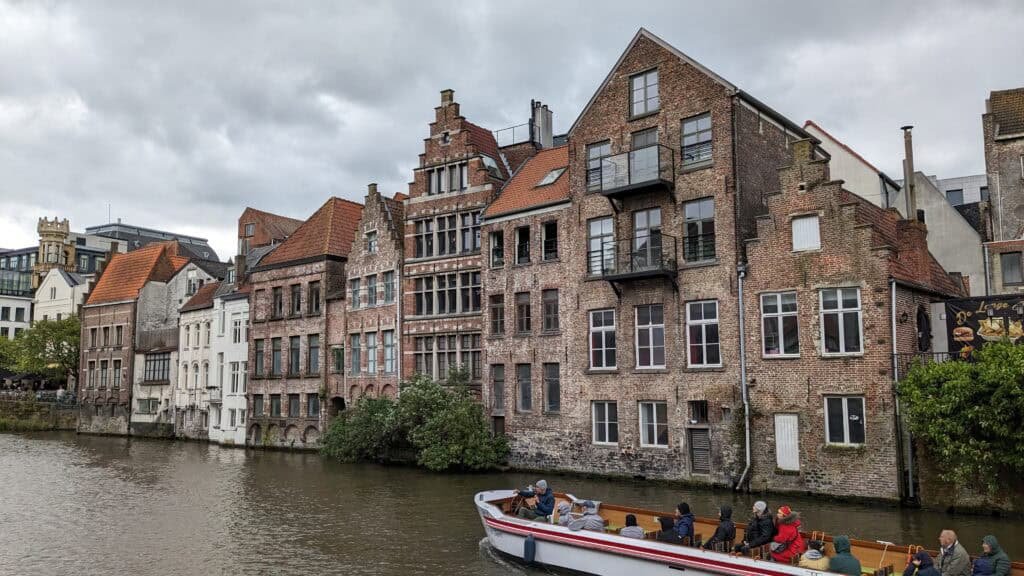
Wander Ghent’s Canals and go on a Boat Trip
Ghent’s picturesque canals and waterways are one of the city’s most iconic features, and wandering round them was one of our favourite things to do in Ghent.
The city has over 100 kilometres of canals that date back to medieval times when Ghent was a prosperous port city. The three main rivers flowing through Ghent are the Leie, the Scheldt, and the Lys.
Just wandering round the canals is a great way to spend a few hours, but you can also take a boat tour. There are a few options for canal cruises in Ghent. The most popular is the Hop On Hop Off Boat Tour which allows you to hop on and off at various stops around the city. You can also opt for a regular 45 minute canal cruise for nice views of the historic centre.
For great views of the waterways without needing a boat tour, head to Graslei, Korenlei or St Michael’s Bridge. Early morning or late evening are beautiful times to stroll along the canals when the light is soft and crowds are smaller.
The canal area near Vrijdagmarkt and Bisdomkaai is very picturesque. Don’t forget to look up too – the buildings along the canals are just as lovely as the waterways themselves.
Why go? Beautiful canals and historic places.
How long? 1 – 2 hours.
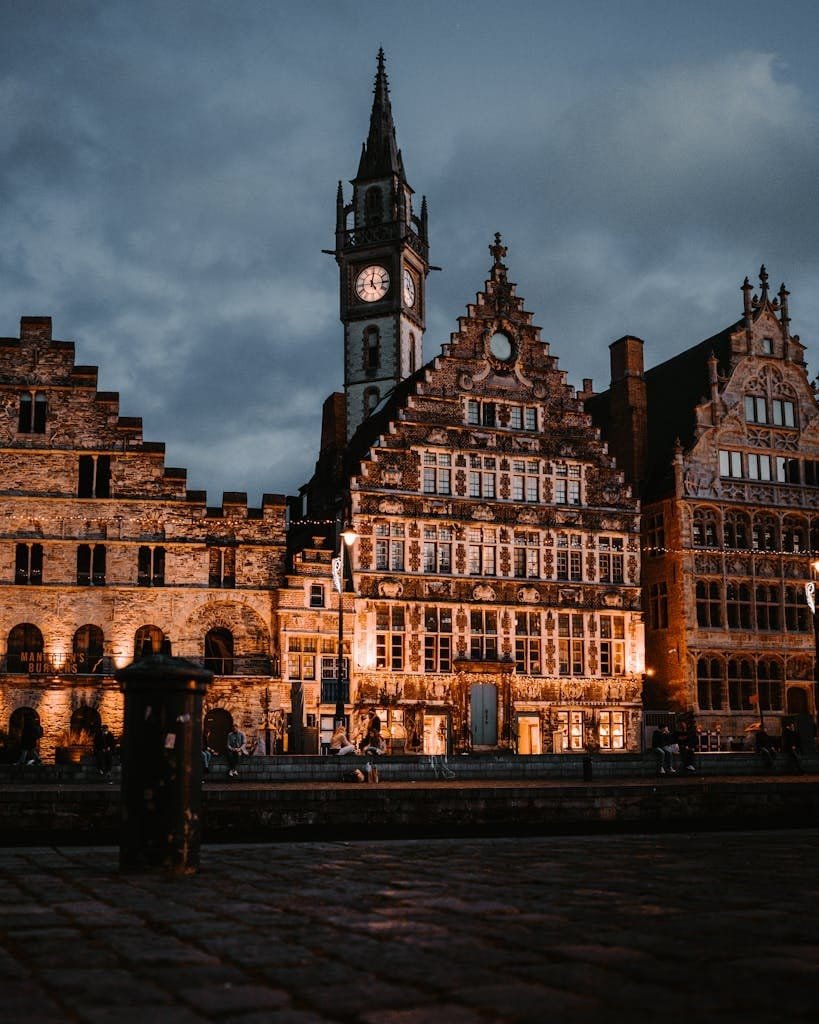
Stroll through Graslei and Korenlei
If you’re after that perfect Instagram shot, head to Graslei and Korenlei. These two streets, running along either side of the River Leie, are often called the prettiest spot in Ghent.
Lined with guild houses dating back to the Middle Ages, this area is the centre of Ghent’s past as a major port city.
Graslei (grass quay), the quay on the eastern side, was the centre of the grain and cereal trade. It has a vibrant row of colourful guild houses, each with its own unique charm. These buildings once served as homes, warehouses, and meeting places, and now, they house restaurants, cafes, and boutiques.
On the other side, Korenlei (wheat quay) is lined with stately buildings adorned with elegant facades and decorated gables. Look for the two gilded swans swimming in opposite directions. One indicates left for women, and the other right for drinks – a clue to pastimes in the 16th century.
In the warmer months, the quayside is buzzing with locals and tourists, all soaking up the sun and the views. But even outside the peak season, it’s a great spot for a stroll. Grab a Belgian waffle from one of the nearby food stalls and take in the scenery.
Why go? Picture-perfect views, historical architecture, and a glimpse into Ghent’s mercantile past.
How long? 1 hour for a stroll, 2-3 hours if you include a boat tour.
Have a tour of Ghent City Hall
Ghent’s City Hall is a architectural marvel that showcases the city’s rich history and artistic heritage. The building is actually a fascinating mix of styles – the oldest part, facing the Botermarkt, is a beautiful example of flamboyant Gothic architecture, while the newer wing on Hoogpoort Street is Renaissance in style.
The Gothic facade is a real showstopper, covered in intricate stonework and statues of the Counts of Flanders. It’s worth taking a moment to admire the craftsmanship – each figure tells a story from Ghent’s history.
Inside, the building is just as impressive. The Wedding Chapel, with its wooden vaulted ceiling and stained glass windows, is particularly beautiful. And the Pacification Room, where the Pacification of Ghent was signed in 1576, is a must-see for history buffs.
Guided tours are available and highly recommended to fully appreciate the building’s history and artwork. Book in advance, especially if you want an English-language tour.
Why go? Stunning architecture, important historical site, and insight into Ghent’s civic life.
How long? 1-2 hours with a guided tour.
Food, drink and shopping in Ghent
Eat at the Great Butchers’ Hall
The Great Butchers’ Hall (Groot Vleeshuis) is a medieval covered market that’s been selling meat since 1419. Today, it’s the perfect place to sample local specialities and pick up some gourmet souvenirs.
The building itself is impressive, with its wooden beams still adorned with meat hooks. Look up, and you might spot some Ganda hams hanging from the rafters to cure – a traditional Ghent speciality.
Inside, you’ll find a restaurant and a shop selling local products. It’s a great place to try Ghent’s famous mustard, nibble on some Belgian cheese, or enjoy a platter of regional cured meats.
Why go? Historical markets and great Belgian food.
How long? 1 hour, or longer if you’re eating.
Pig out at the Holy Food Market
Feeling peckish? Make your way to the Holy Food Market. This food hall is housed in a beautifully renovated 16th-century chapel, combining stunning architecture with mouth-watering cuisine.
With over 15 different food stalls, there’s something to satisfy every craving. From local Belgian specialities to international cuisine, you can take a culinary trip around the world without leaving the building.
The central bar serves up a wide range of Belgian beers – perfect for washing down all that delicious food.
The market is open daily, but opening hours can vary for individual stalls. It’s a popular spot with locals, especially on weekends, so arrive early to snag a good seat.
Why go? Diverse cuisine, unique setting, and a chance to rub shoulders with locals.
How long? 1-2 hours, depending on how hungry you are!
Peruse the stalls at Vrijdagmarkt
Despite its name (which translates to ‘Friday Market’), Vrijdagmarkt is worth a visit any day of the week. This expansive square has been at the heart of Ghent’s social and commercial life for centuries.
On Fridays and Saturdays, the square hosts a lively market where you can browse everything from fresh produce to antiques. Even if you’re not there on market day, the square is surrounded by cafes and restaurants, making it a great spot for people-watching.
In the centre of the square, you’ll find a statue of Jacob van Artevelde, a 14th-century Flemish statesman. Legend has it that rubbing his foot brings good luck.
If you’re interested in Ghent’s socialist history, look out for the Ons Huis building on the eastern side of the square. This former socialist meeting house now houses a fascinating museum dedicated to the city’s industrial past.
Why go? Lively atmosphere, local culture, and a dash of political history.
How long? 1 hour, longer on market days.
Have a Belgian beer (or two) at the Herb De Dulle Griet
Herberg De Dulle Griet is a unique and iconic tavern located in the heart of Ghent, just off Vrijdagmarkt (Friday Market Square). The tavern is named after a famous cannon called “Dulle Griet,” which is on display in front of the building.
It boasts an impressive beer menu, with an extensive selection of Belgian and international brews. The tavern is particularly famous for its “Max” beer, served in a massive two-litre glass called the “Dulle Griet Trophy”. While not the most practical drinking vessel, it’s a fun tradition (you’ll need to leave a shoe as collateral until you return the glass).
Beyond the unique beer offerings, Herberg De Dulle Griet is filled with character and charm. The interior is cozy, with low ceilings, wooden beams, and antique decorations, creating a warm and inviting ambiance. Had we not had to leave Ghent, we probably would have spent the evening there!
Go shopping in Ghent
Ghent has plenty of options for shopping, from major department stores to local boutiques and markets. The main shopping streets are Veldstraat, Langemunt, and Korenmarkt, which are located in the heart of the city centre. This area is full of major brands, shoe stores, bookshops, and more. Don’t miss out on a Belgian chocolate shop like The Chocolate Line while you’re exploring the city centre.
For more local and independent stores, head to Sleepstraat which has small art galleries, vintage shops, and concept stores. Another area to check out is the Patershol neighborhood just outside the city centre, home to chocolate shops . Stop by LABEL for stylish fashions by Belgian designers.
Some of the best souvenirs to take home include Belgian chocolates, lace, beer, and cuberdons (a cone-shaped purple candy). Pick up beautifully packaged chocolates at stores like The Chocolate Line or buy some delicate lace items. Belgian beers make great gifts – pick up some rare bottles at a bottle shop or an assortment of mini bottles. Cuberdons can be found at candy stores around the city.
Off the beaten path: outside Ghent’s old town
See modern Ghent at Portus Ganda
For a taste of modern Ghent, head to Portus Ganda. This redeveloped harbour area, where the Scheldt and Leie rivers meet, has been transformed into a vibrant neighbourhood that perfectly blends old and new.
The area takes its name from the old Celtic name for Ghent, and it’s where the city first began to develop in the Middle Ages. Today, it’s a popular spot for both locals and tourists, with its marina, cafes, and beautifully landscaped public spaces.
One of the highlights is the striking Portus Ganda bridge, a modern pedestrian and cyclist bridge that’s become something of a local landmark. Its sweeping design offers great views of the area and the rivers.
Why go? Modern face of Ghent, pleasant riverside walks, and a glimpse into the city’s future.
How long? 1-2 hours.
Admire the street art at Graffiti Street
For a complete change of pace, head to Werregarenstraat, better known as Graffiti Street. This alleyway is a constantly evolving open-air gallery, where street artists are free to express themselves without fear of fines.
The artwork here changes frequently – sometimes daily – so you never know what you’re going to see. It might be a politically charged mural, a whimsical cartoon character, or an abstract masterpiece.
Graffiti Street is a testament to Ghent’s vibrant creative scene and its willingness to embrace street art as a valid form of expression. It’s also a great spot for some unique holiday snaps!
If you’re keen to learn more about Ghent’s street art scene, consider joining a guided tour. Local experts can provide insights into the artists and the stories behind the murals.
Why go? Ever-changing artwork, insight into local culture, and great photo opportunities.
How long? 30 minutes to an hour.

Explore the ruins of Sint-Baafsabdij
Sint-Baafsabdij, also known as Saint Bavo’s Abbey, is a historic site in Ghent that holds immense cultural and architectural significance. Founded in the 7th century, the abbey was once a thriving religious and cultural centre.
Today, you can explore the remnants of the complex, including the Abby Tower and the gardens. The abbey grounds offer a peaceful retreat from the bustling city, with serene gardens and scenic views.
There’s a Museum of Stone Cutting and Sculpture, which contains medieval tombstones, sculptures and artefacts from the 12 -18th centuries.
Top tip: If you’re planning to visit multiple attractions, consider getting the Ghent City Card, which includes entry to most of the city’s main sights.
Why go? Beautiful and peaceful ruins.
How long? Two hours.
Check out our guide to visiting Ghent – when to go, how to get there and more
Stroll round Patershol and grab a bite to eat
After ticking off the main sights, it’s time to dive into Ghent’s more bohemian side. Welcome to Patershol, a labyrinth of narrow cobblestone streets that’s been the city’s culinary and artistic heart for centuries.
This neighbourhood was once home to leather workers and has managed to retain much of its medieval charm. Today, it’s packed with cosy restaurants, quirky boutiques, and art galleries. It’s the perfect place to get lost for an afternoon.
Patershol is also where you’ll find some of Ghent’s best restaurants. From traditional Flemish cuisine to innovative fusion dishes, there’s something for every palate. We recommend trying waterzooi, a creamy chicken or fish stew that’s a local speciality.
Top tip: if visiting from November to January, keep an eye out for the Patershol’s famous Christmas market. The narrow streets come alive with twinkling lights, the scent of mulled wine, and local artisans.
Why go? Charming medieval streets, fantastic food, and a glimpse of local life.
How long? 2-3 hours, more if you stop for a meal.

Enjoy the peace at the Beguinages
Don’t miss Ghent’s beguinages – these walled communities were once home to beguines, lay religious women who lived together but didn’t take formal vows. Ghent has three beguinages, each with its own character.
The Old St. Elizabeth Beguinage, founded in the 13th century, is the most centrally located. Its peaceful courtyard, surrounded by whitewashed houses, feels a world away from the bustling city centre.
The Grand Beguinage of St. Elisabeth, located in the suburb of Sint-Amandsberg, is the largest. Founded in the late 19th century, it’s a beautiful example of neo-Gothic architecture. With its church, community buildings, and over 700 houses, it’s like a small village within the city.
Finally, there’s the Klein Begijnhof (Small Beguinage), tucked away near the Patershol neighbourhood. It’s the smallest and most intimate of the three, with just a handful of houses around a central courtyard.
All three beguinages are UNESCO World Heritage sites alongside the Beguinages in Bruges (and other cities in Belgium). They offer a glimpse into a unique aspect of Flemish history and culture.
How long? 30 minutes
Why go? Peaceful atmosphere, unique historical sites, and beautiful architecture. How long? 30 minutes to 1 hour for each beguinage.
Citadelpark
Need a break from city sightseeing? Head to Citadelpark, Ghent’s largest public park. This green oasis is perfect for a leisurely stroll or a picnic, weather permitting.
The park was created in the 19th century on the site of a former Dutch citadel. Today, it’s home to beautiful gardens, a bandstand, and several museums, including the SMAK (Municipal Museum of Contemporary Art) and the Museum of Fine Arts.
Don’t miss the beautiful Feest- en Floraliënhal, a former Art Nouveau festival hall with a stunning glass dome.
Why go? Green space in the city, beautiful autumn colours, and a chance to relax.
How long? 1-2 hours.
Ghent’s museums and galleries
Learn about Ghent at the STAM (Ghent City Museum)
For a crash course in Ghent’s history, head to STAM. This innovative museum tells the story of the city from its early beginnings to the present day.
The museum is housed in the beautifully restored Bijloke Abbey, a former hospital dating back to the 13th century. The contrast between the historic building and the modern exhibits is striking.
One of the highlights is the giant aerial floor map of Ghent. You can walk across it (with protective booties provided) and get a bird’s-eye view of the city. It’s a great way to orient yourself and plan the rest of your sightseeing.
The interactive exhibits are engaging and informative, covering everything from Ghent’s medieval heyday to its industrial revolution and beyond. There’s even a section on the city’s future, exploring urban planning and sustainability initiatives.
STAM is open Tuesday to Sunday, and tickets cost around €10 for adults.
Why go? Comprehensive city history, interactive exhibits, and a unique aerial view of Ghent.
How long? 2-3 hours.
Be inspired at the Museum of Fine Arts (MSK)
The Museum of Fine Arts (Museum voor Schone Kunsten, or MSK) houses an impressive collection spanning from the Middle Ages to the early 20th century.
The museum’s strength lies in its Flemish art collection, with works by masters like Hieronymus Bosch and Peter Paul Rubens. But you’ll also find pieces by international artists, including Rodin and Manet.
The building itself is a work of art, with its grand neoclassical façade and light-filled galleries. Recent renovations have made it even more impressive, with improved lighting and display techniques that really make the artworks shine.
Don’t miss the museum’s hidden gem – a beautiful art deco room decorated with murals by local artist Jozef Horenbant. It’s a peaceful spot to sit and reflect on all the masterpieces you’ve seen.
The museum is open Tuesday to Sunday, and tickets cost around €12 for adults. Audio guides are available and highly recommended for deeper insights into the artworks.
Why go? World-class art collection, beautiful building, and a chance to see works by Flemish masters.
How long? 2-3 hours.

Design Museum Gent
If you’re a fan of design, this one’s for you. The Design Museum Gent houses a vast collection of decorative arts and design, from Art Nouveau furniture to contemporary installations.
The museum is split between two buildings – an 18th-century mansion and a modern extension. This juxtaposition of old and new perfectly encapsulates Ghent’s approach to preserving its heritage while embracing the future.
The permanent collection is impressive, but it’s the temporary exhibitions that really shine. The museum often collaborates with contemporary designers and artists, ensuring there’s always something new to see.
The museum is open Tuesday to Sunday, and tickets cost around €10 for adults. Check their website for information on current exhibitions.
Why go? Inspiring design, thought-provoking exhibitions, and a chance to pick up unique souvenirs.
How long? 1-2 hours.
Day trips from Ghent
There’s loads of things to do in Ghent but it also makes an excellent base to explore other cities and towns in Belgium and northern France. Here are some of the best and most popular day trips:
Bruges – one of the most obvious and popular day trips from Ghent. The fairy tale medieval town is just a 30-minute train ride away, making it an easy day trip. Wander the charming cobbled lanes, admire the medieval architecture, and take a boat tour along the canals. Our Bruges travel guide can help you make the most of your stay.
Antwerp – another great day trip option, and under an hour away by train. It’s a lively port city with impressive architecture, museums, and Belgium’s largest cathedral. See our guide to Antwerp for ideas on what to do there.
Ostend or Blankenberge – for a change of scene, head to the coast. It takes just over an hour to reach the beach by train making it the perfect day trip. Relax on the sandy beaches, stroll the seaside promenade, or visit some of the coastal museums and attractions.
Next step after Ghent? Try our Bruges guide if you’re after storybook scenery – or head to Antwerp for art, food and culture.
Frequently Asked Questions about visiting Ghent
Q: What is the best time of year to visit Ghent?
A: The best times to visit Ghent are late spring (April–June) or early autumn (September–October), when weather is mild and crowds are manageable.
Q: Are there free attractions in Ghent?
A: Yes! Many Ghent attractions like St Bavo’s Cathedral, Vrijdagmarkt, and walking around Graslei are completely free to visit.
Q: How many days should I spend in Ghent?
A: Two to three days is ideal for exploring Ghent’s key attractions, experiencing local culture, and enjoying leisurely walks along the canals.
Check out our full guide to visiting Ghent, which answers these questions and more.
This article is now featured on GPSmyCity. To download this article for offline reading or travel directions to the attractions highlighted in this article, go to Walking Tours and Articles in Ghent on GPSmyCity.
This page contains affiliate links. If you make a purchase through one of these links we make a small commission to help run this site, at no cost to you. Making a commission never affects the advice we give - see our content policy.

